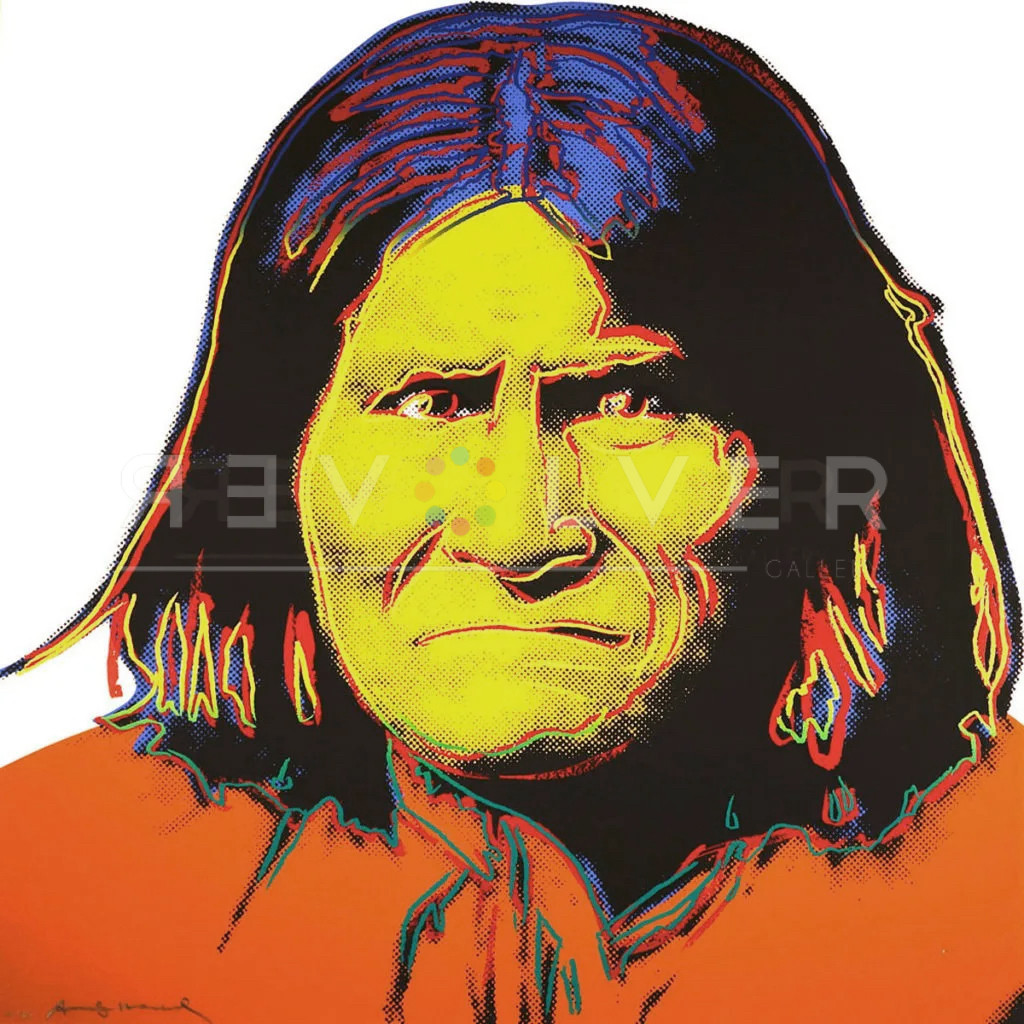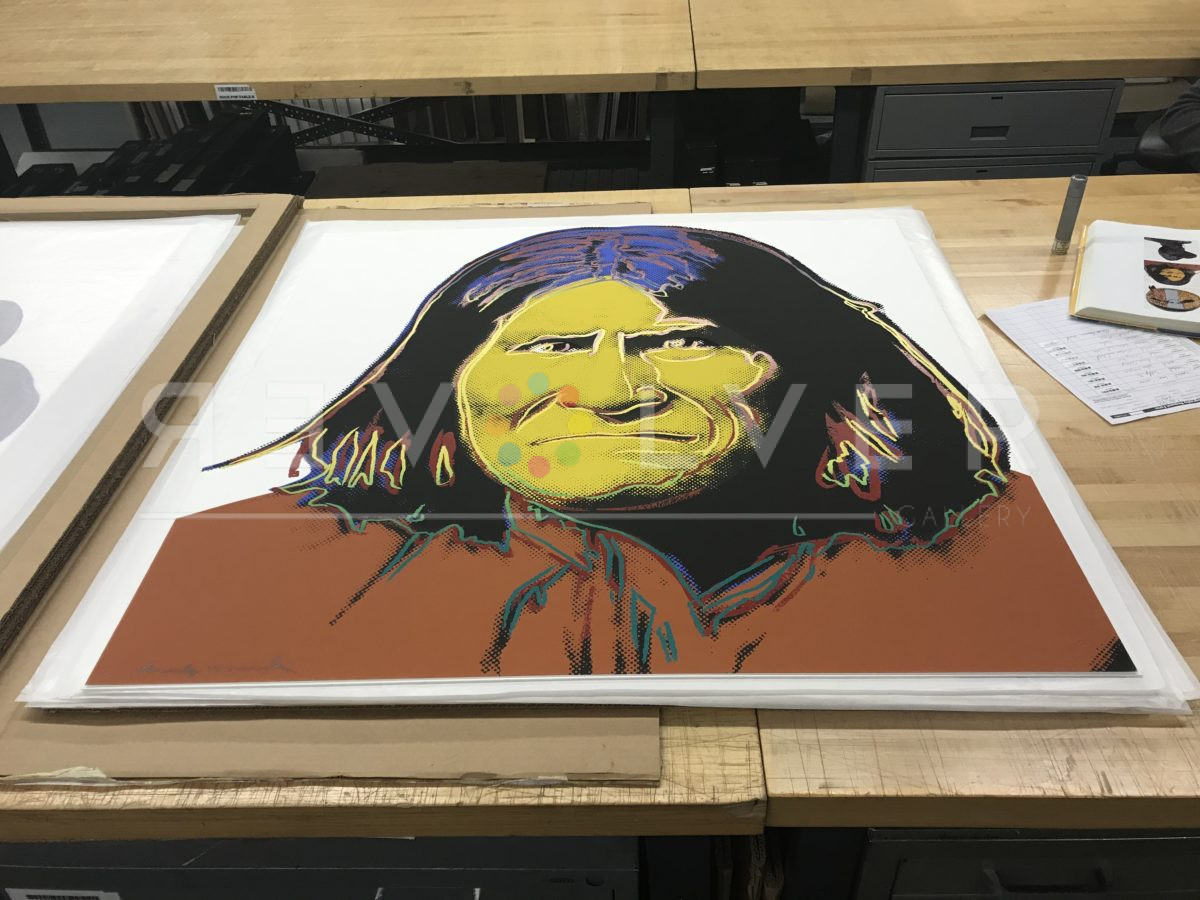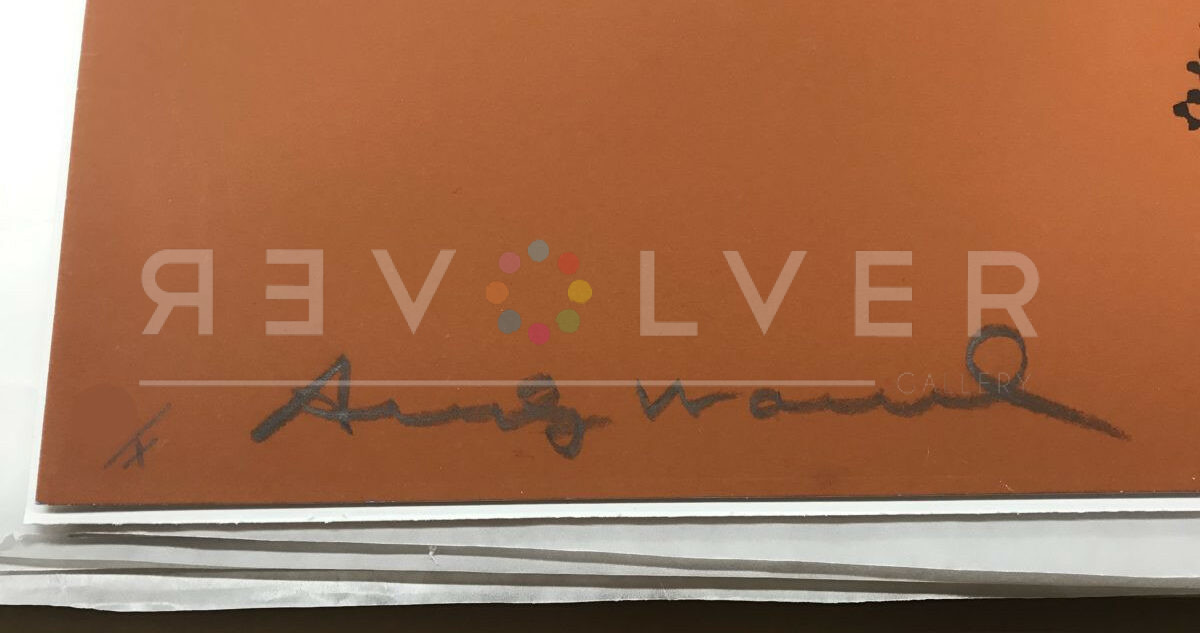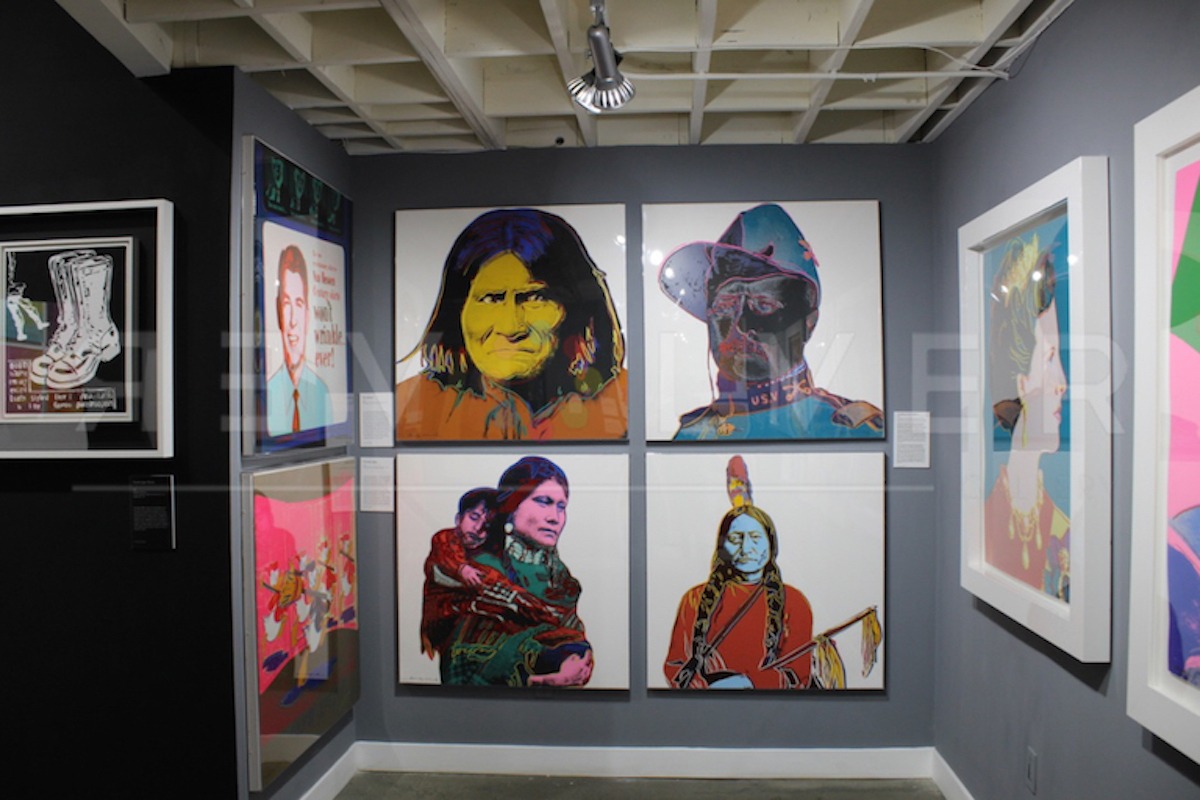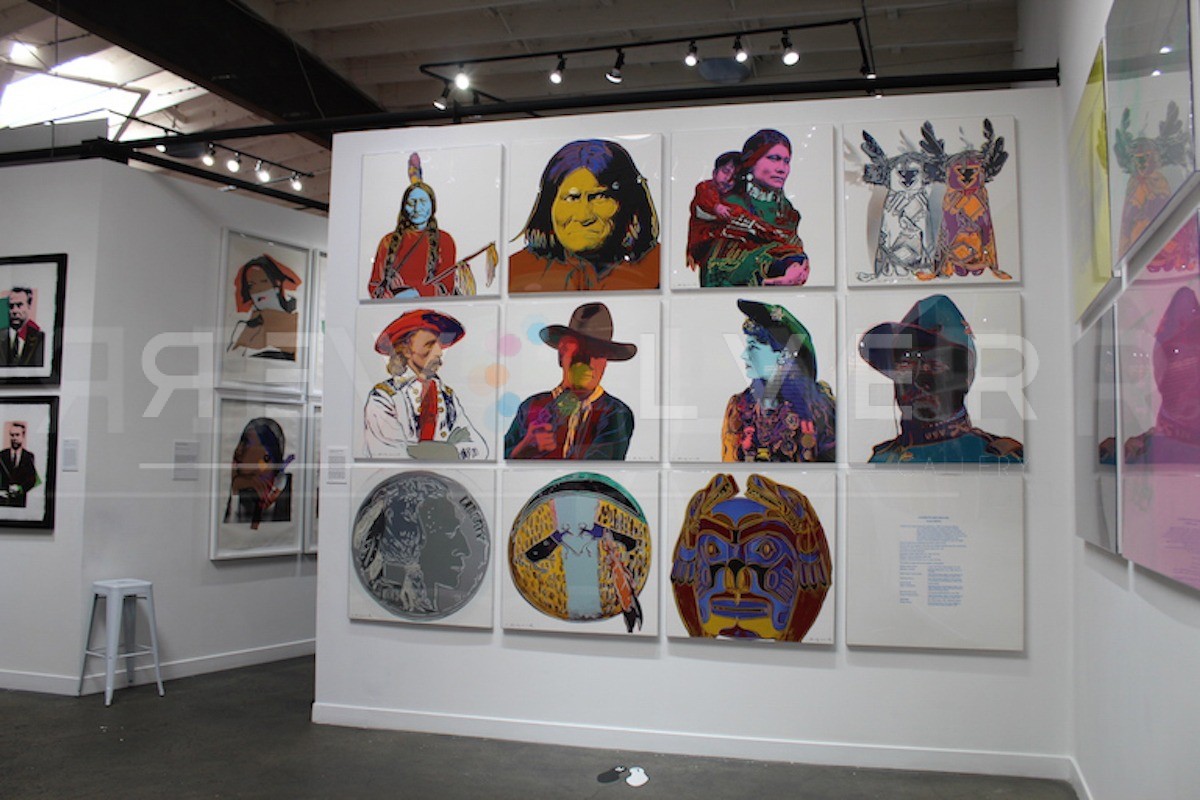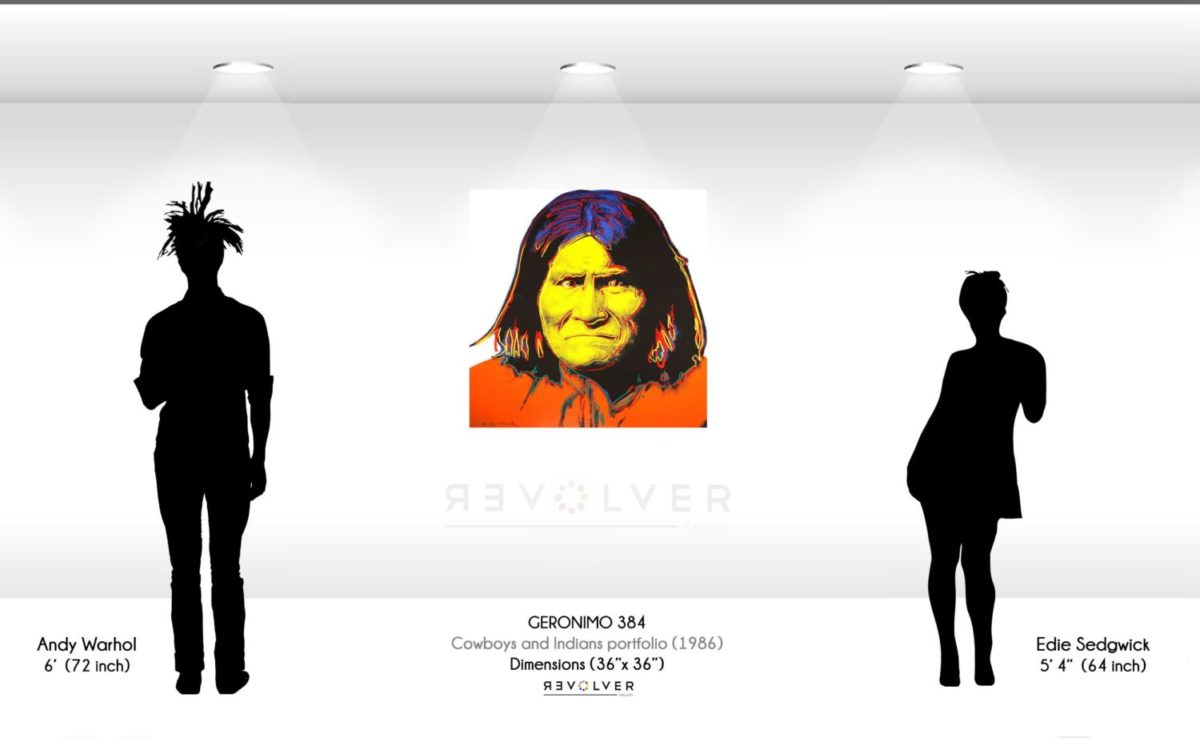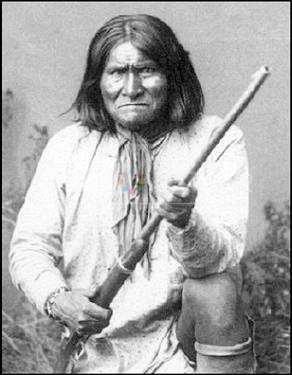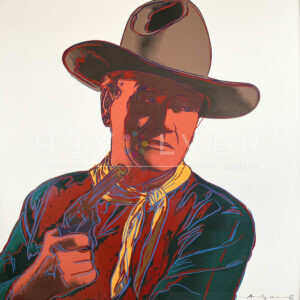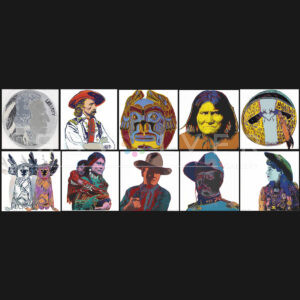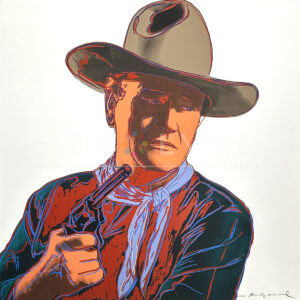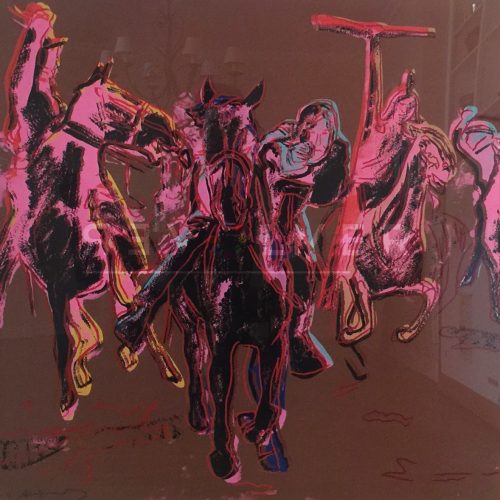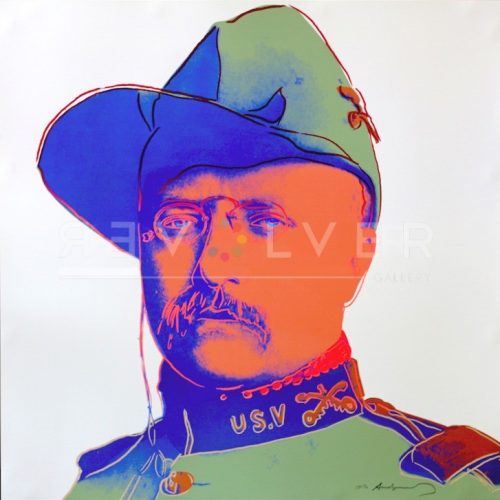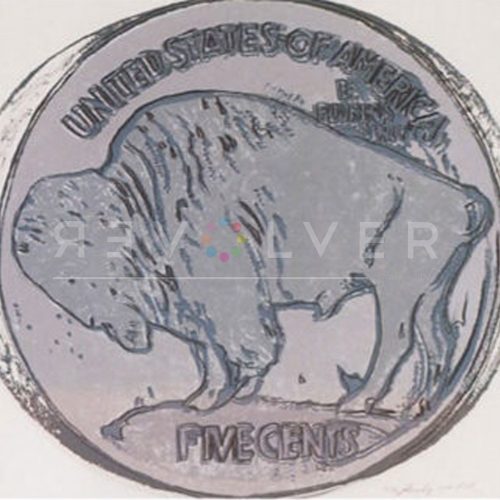Geronimo 384 is one of ten screenprints from Andy Warhol’s Cowboys and Indians portfolio. Created in 1986, the portfolio centers around themes and figures of the Old West, exploring the folklore and imagination of the West prevalent in American culture. Aside from the portfolio surveying the themes and folklore connected with Western America, it additionally exemplifies Warhol’s fascination with the West. During Warhol’s adolescence, he would frequently watch western films. Later on, he would create two Western films of his own: Horse and Lonesome Cowboys. The portfolio portrays numerous notable figures reminiscent of the American west, such as Annie Oakley, Teddy Roosevelt, and General Custer, juxtaposed against Native American symbols and figures.
Geronimo 384 depicts the prominent Native American figure Geronimo who was the leader and ‘medicine man’ from the Bedonkohe band of the Apache tribe. He was highly regarded and respected in his community, leading numerous raids and fights against Mexican and U.S. military campaigns in southwestern America. However, in 1886, Geronimo surrendered to American forces after an intense pursuit in Northern Mexico. He was taken as a prisoner of war, exploited and capitalized on for his fame by the United States. He was made into a token of Native American identity, sometimes used as a spectacle in events where tourists would pay to harass or take pieces of his clothing. Geronimo’s exploitation and portrayal as a caricature caused his life to become overshadowed and erased, with depictions of him in pop culture becoming overly generalized as a stereotype of Native American identity.
Though Warhol frequently regarded his work as politically neutral, the portfolio undoubtedly reflects Hollywood’s (and the general public’s) romanticized version of the West back to the audience. Geronimo 384 immediately evokes issues of exploitation, conflict, and historical representation. Warhol’s Pop Art depiction of Geronimo effectively decontextualizes him, confronting viewer’s with their own imagination of Geronimo and the larger scene of the Wild West. Simultaneously, Warhol presents Geronimo as a massive historical symbol, the same way he represented larger-than-life figures like Marilyn Monroe, or even chairman Mao. As a result, Geronimo enters the Warhol canon alongside a cast of figures that are essential to a holistic understanding of American culture.
Photo credit: Portrait of Geronimo by A.F. Randall, c.1886, Library of Congress Prints and Photographs Division.

